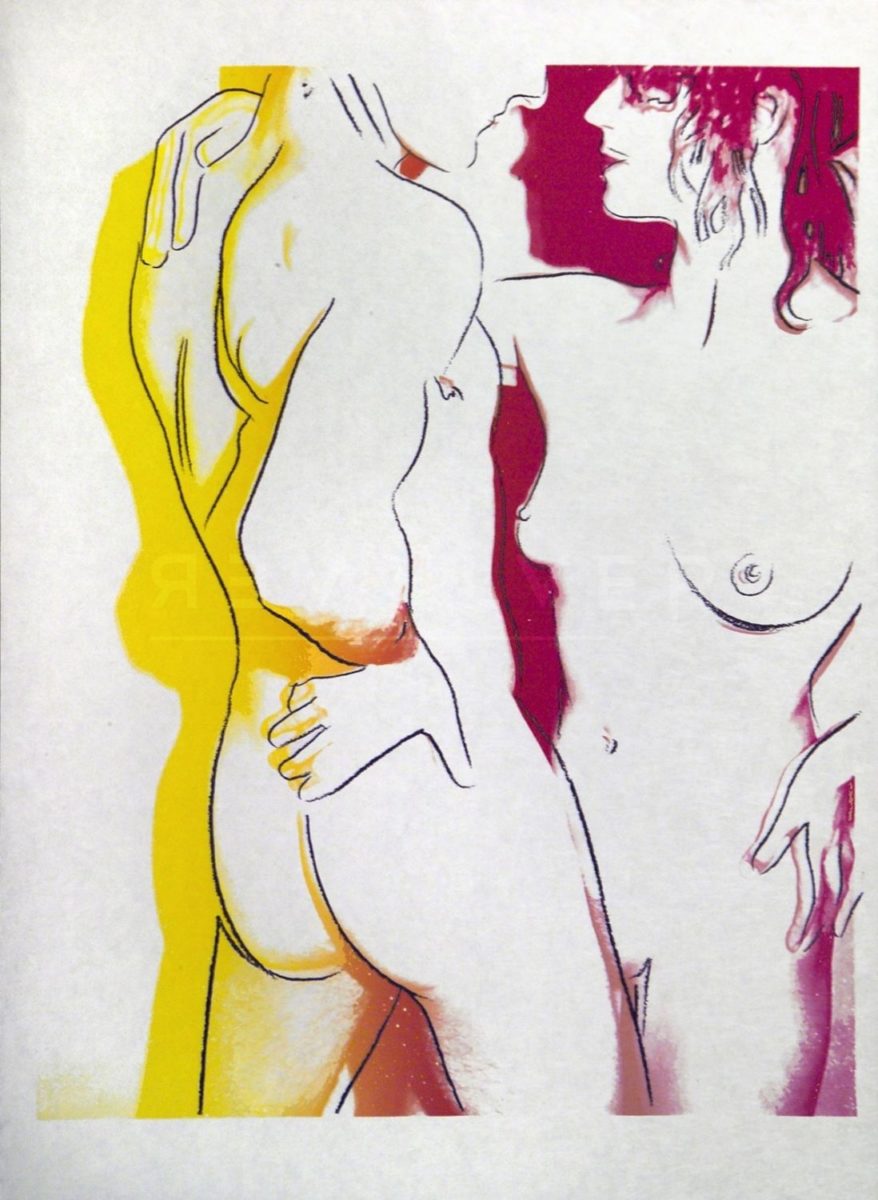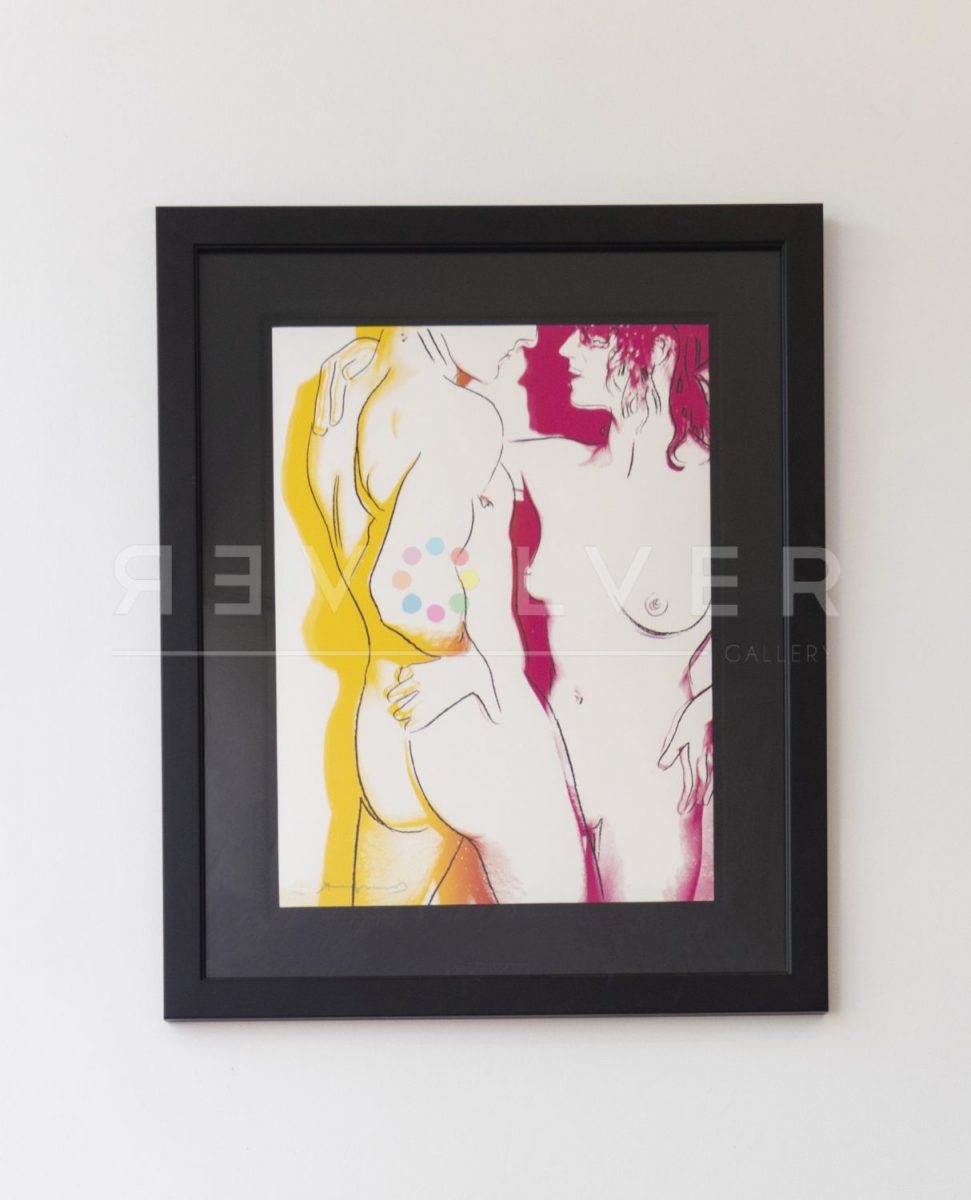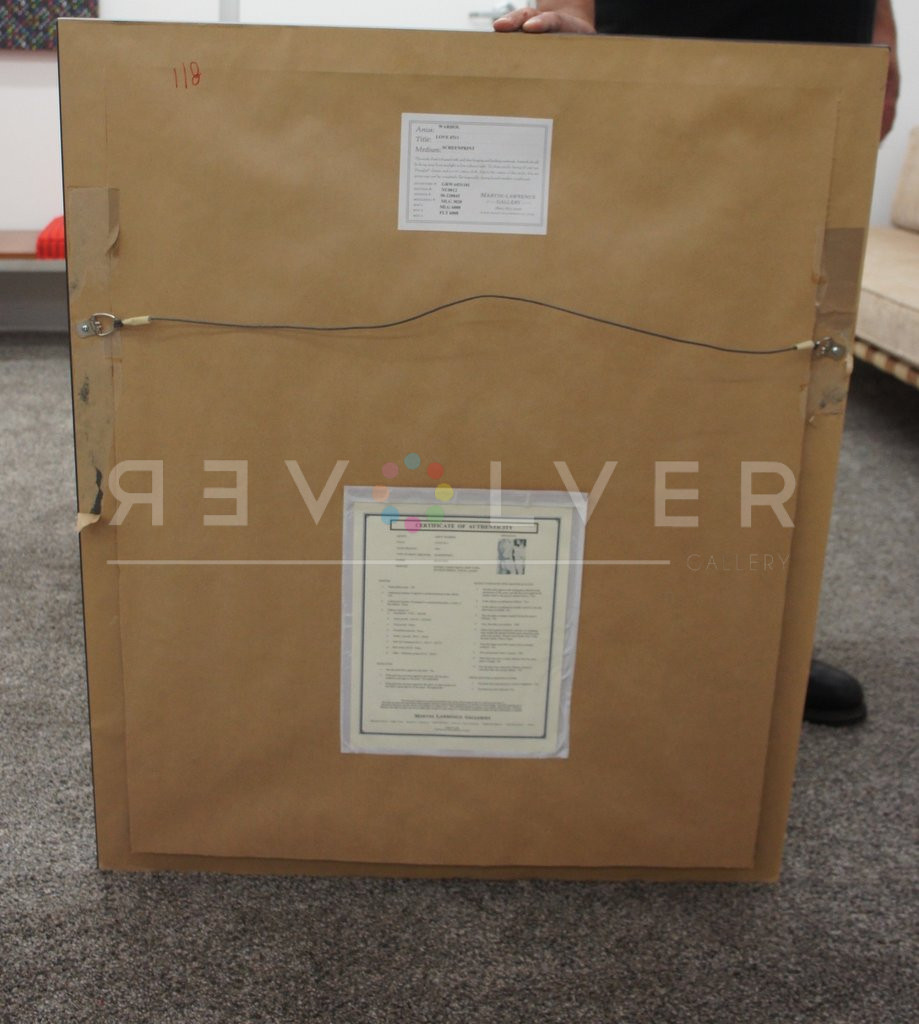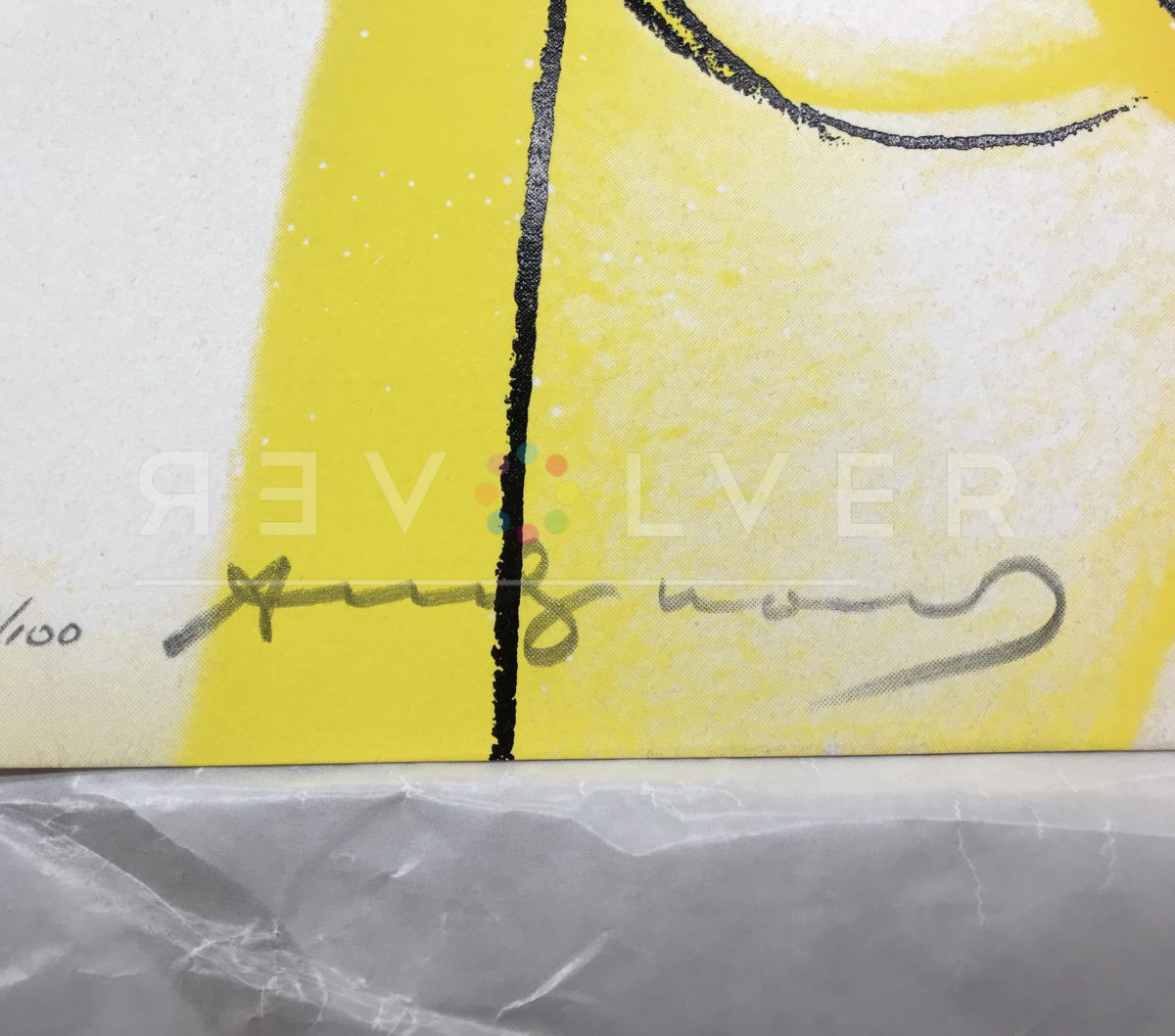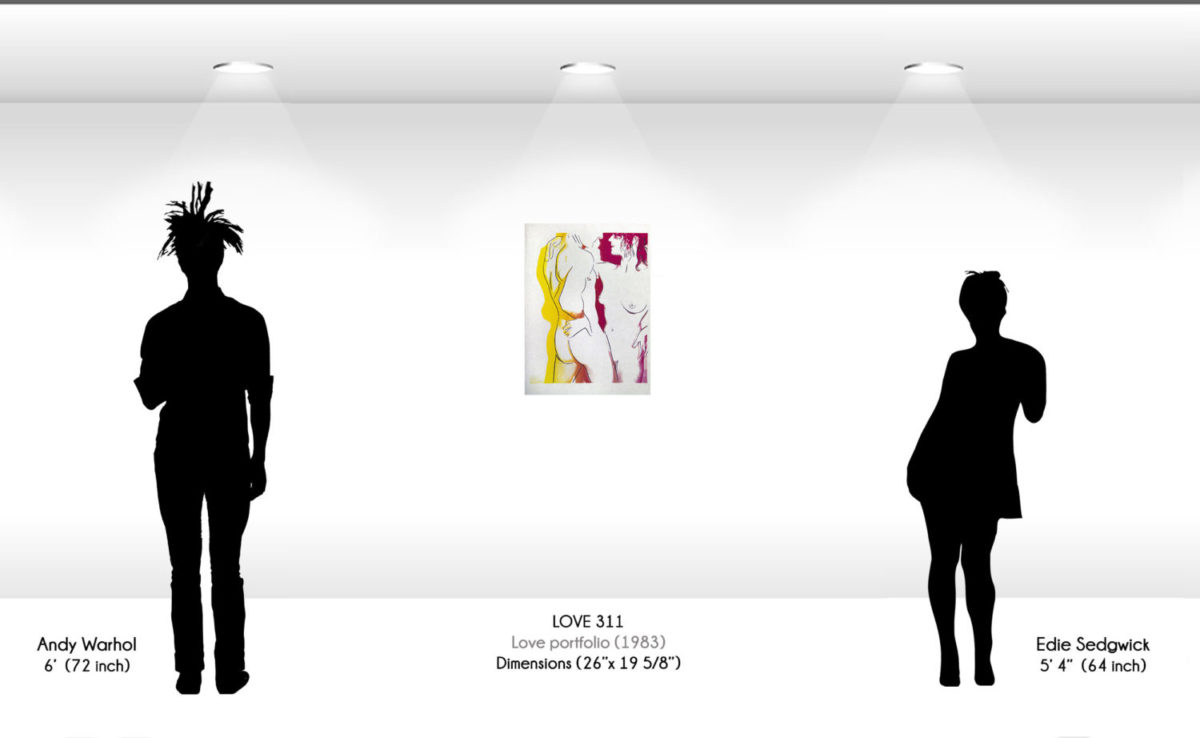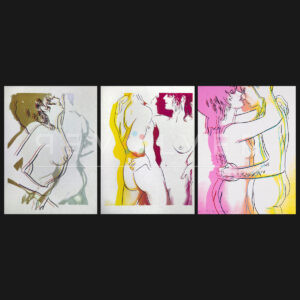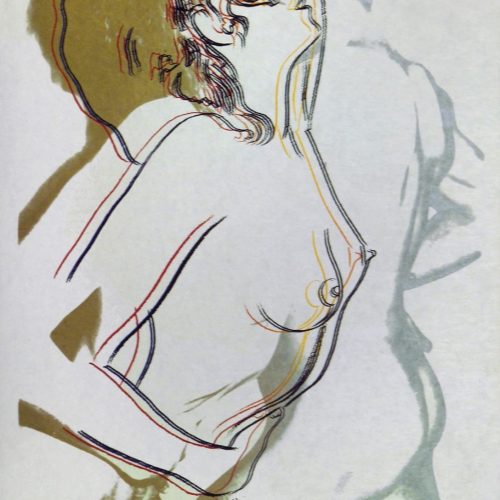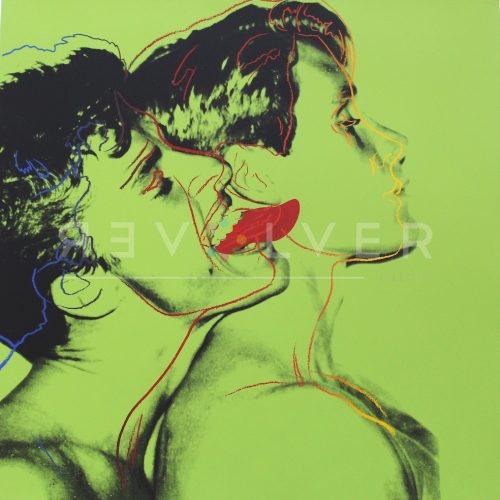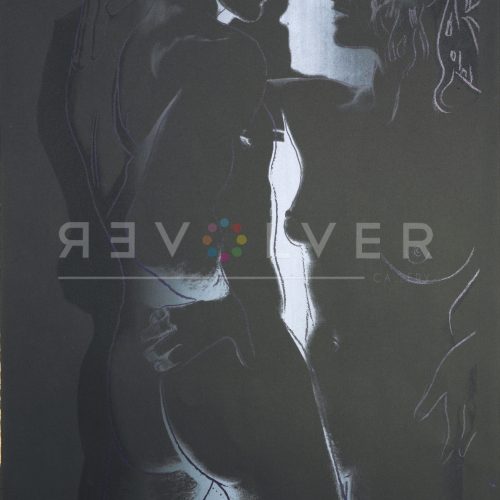Andy Warhol published Love 311 in 1983 as part of his iconic Love series. This portfolio includes three screenprints that focus on love, intimacy, and sexual desire. The prints display a nude couple in three different positions, and uses heavy shading and highlighting as a way to visualize the intensity of the scene. This particular print of Love 311 is distinct in the colors that define each figure. The couple is facing each other, their shadows brightly colored in a red and yellow haze that contrast sharply with the white background and their bodies. Revolver also holds a unique version of Love 311.
While Warhol always seemed to remain less interested in sex (and love) than the average person, this attitude of his could be interpreted in multiple ways. Although he claimed to be a virgin at 52 years old (which, it turns out, wasn’t true), and wasn’t known to date very often, he definitely had his own admiration for the concept. He once said that sex is far more interesting “on the screen” than in real life. His movies reflect this more than anything, as they were often filled with erotic content. Works like Love 311 and Sex Parts also echo the notion of Warhol’s interest in the theatrics of love, rather than the lived experience of it. One might say that Warhol held admiration (perhaps even an obsession) for love and sex, but only from a safe distance.
As mentioned in Love 310, Andy Warhol wrote down several tips for romantic love in his biography. Another piece of advice he had to offer for those embarking on a love affair was that “you should put in exactly as much time and energy as the other person.” And perhaps Love 311 is an endorsement of that statement, the desirable couple seemingly equal in their partnership and in the act of love, similar in composition to Love 312.
“I wonder if it’s possible to have a love affair that lasts forever,” Warhol mused. His autobiography makes clear that he’d considered the question at length, likely from a young age. In the same section, he remembers his mother telling him “not to worry about love, just to be sure to get married.” This love-marriage binary, and the idea that either could be sustained for a lifetime, clearly preoccupied Warhol. “If you’re married for thirty years and you’re ‘cooking breakfast for the one you love’ and he walks in, does his heart really skip a beat?” he asks. But before giving into sentimentality, he stops himself: “I guess it skips a beat over that breakfast and that’s nice too. It’s nice to have a little breakfast made for you.”
Albeit introduced with classic pessimism, Warhol did give one insightful clue as to what might sustain a successful, loving relationship. “Love affairs get too involved, and they’re not really worth it,” he said. “But if, for some reason, you feel that they are, you should put in exactly as much time and energy as the other person.” In other words, be present in the relationship and make sure that both partners give equally to each other. Or, in Warhol’s ever-deadpan terminology: “I’ll pay you if you pay me.”
View Revolver Gallery’s complete Love portfolio by Andy Warhol here.

